==
About a year ago a friend found a dead bobcat on a trail by our family lodge. Being wise in the ways of the woods, he hung the carcass in a tree so the yellow-jackets could strip it clean, and we could recover the bones later. The resulting washed-up skull has an interesting tale to tell...
Introducing Bob the bobcat:
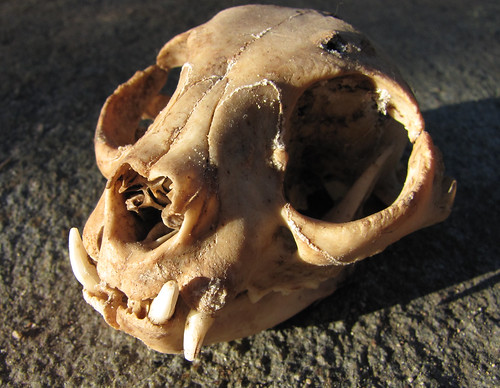
Adult western bobcats, Lynx rufus, are about 20-25 lbs (10kg). Kinda like a
really big tabby cat. The skull size suggested male, but I can't be sure.
Top-down view of Bob:
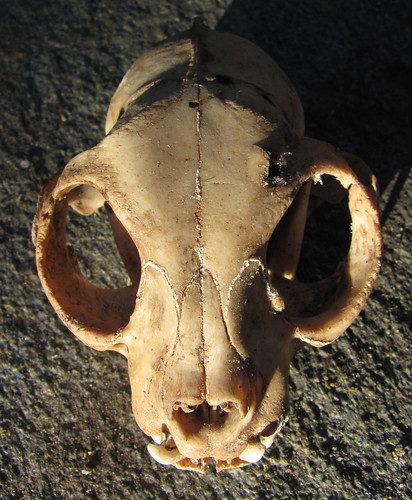
Mountain lion skulls are almost twice the size of bobcat skulls,
and not quite as flat-faced. Their teeth are bigger as well.
Looking at this angle, it doesn't take much of a forensic scientist to see what happened on the trail that fateful day - it appears that Bob ran into the bitey end of a coyote...
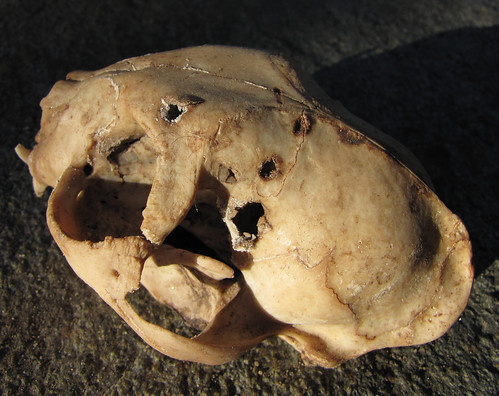
Pattern and size of bite mark say the culprit was a Canis latrans
Canine tooth distance and overall pattern are consistent with coyote. Gray fox jaws & teeth are about 1/2 the size and may be too small to break through a skull with a bite. Besides, gray foxes are about the same size as a bobcat and would not wanna mess with all those teeth & claws.
I'd edu-guess Bob got outnumbered by the pair of local coyotes we see roaming around (even chasing deer), and have caught on my cam traps. Adult coyotes are typically 30-40 lbs, and two of them would be a tough match for a 20-25 lb Bob. Btw - a 10lb difference might not sound like a lot until you think of it in scale - it's 1/2 again the body weight of the bobcat. That's a big difference. It's a 160 lb fighter vs. a 240 lb fighter (or two!). Which would you bet on?
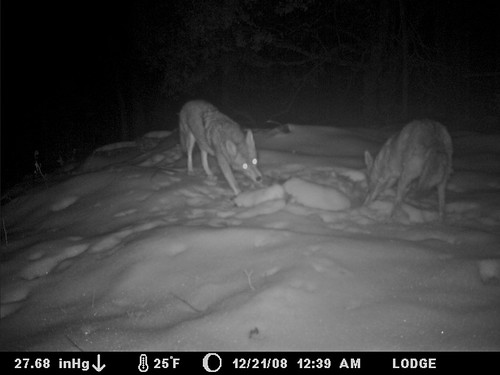
The two local coyotes trying to dig a frozen deer dinner from under the snow
But maybe there's a little more to the skull story. It appears Bob might have been an older cat, and getting a little short in the tooth:
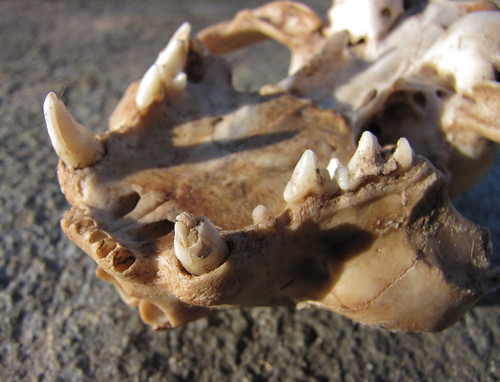
Bob the bobcat also had a broken front fang
That can affect feeding and thus health, and make it even harder on an ole bobcat in a fight. But that's the ways of the woods. At some point, we all have a bad day. Hopefully, Bob had a whole lot of good ones beforehand.
==
For my bobcat readers out there feeling sad for their friend that died to help me tell this tale, here's an uplifting counter-point story...
Good Day to be a Bobcat
(note: not the same bobcat as featured above)
One day last spring while exploring a field near our fenceline, I heard a sharp snap and snarl from beyond the fence. I turned and in the field just 50 feet from me a bobcat was zig-zagging in high-pursuit of a western gray squirrel. The bobcat had been hiding in a big pile of dead manzanita snags, and the field-foraging squirrel was now running for the woods like his life depended on it. It did. The amazingly agile cat caught the tree squirrel just 3 feet from a big pondy pine. Here's the series I snapped as the grayback cat stopped to give me some stares, and then saunter off with the snack...
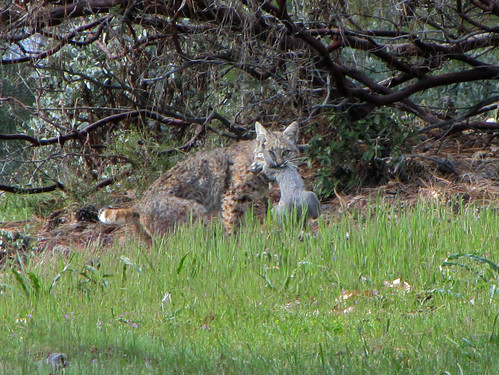
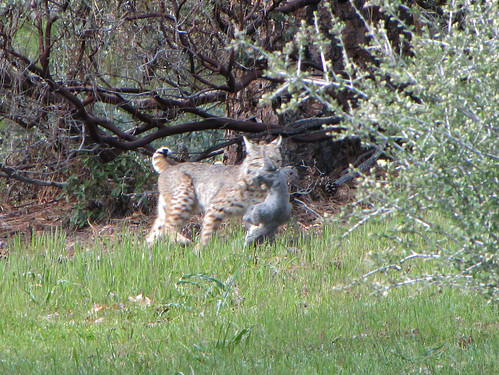
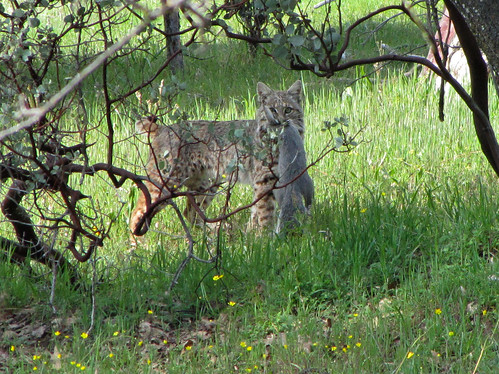
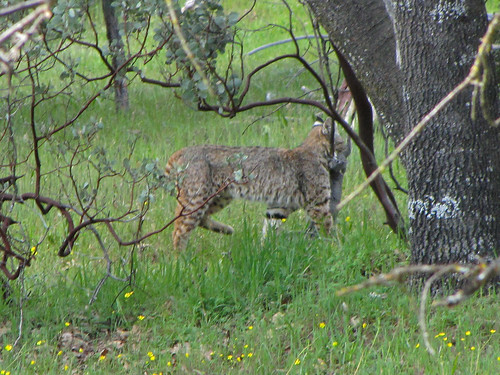
Note: this series may also one day be seen on a post titled "Bad Day to be a Gray Squirrel."
====
References:
- Mark Elbroch - Animal Skulls: A Guide to North American Species
- Wikipedia - Bobcat
- Wikipedia - Coyote
========

Well, it was a good day to be a follower of your blog! What a good post. Thank you so much. ~karen
ReplyDeleteThanks Karen! Glad you enjoyed Bob's story.
ReplyDeleteIncredible natural history moments witnessed.
ReplyDeleteI would kill for a bobcat skull!
Excellent post. I've awarded you a Sunshine Award. Check the details on my blog and feel free to pass it on. ~ks
ReplyDeleteGreat post, Ken. That Bob had seen better days, and was a tad slow for the yotes.
ReplyDeleteSorry to throw cold water on Bob, but the skull pictures prove him to have been a housecat. Skull size does overlap at the small end of the bobcat range, but:
ReplyDeleteThat little premolar tooth behind Bob's canine is a housecat feature; bobcats and lynx don't have it.
The eyesocket of a housecat is almost or completely encircled in back by bony projections from the cheekbone and top of the skull. Bobcats and lynx have pointy projections to the rear--resembling open-mouthed fangs--but these don't come close to completing the circle.